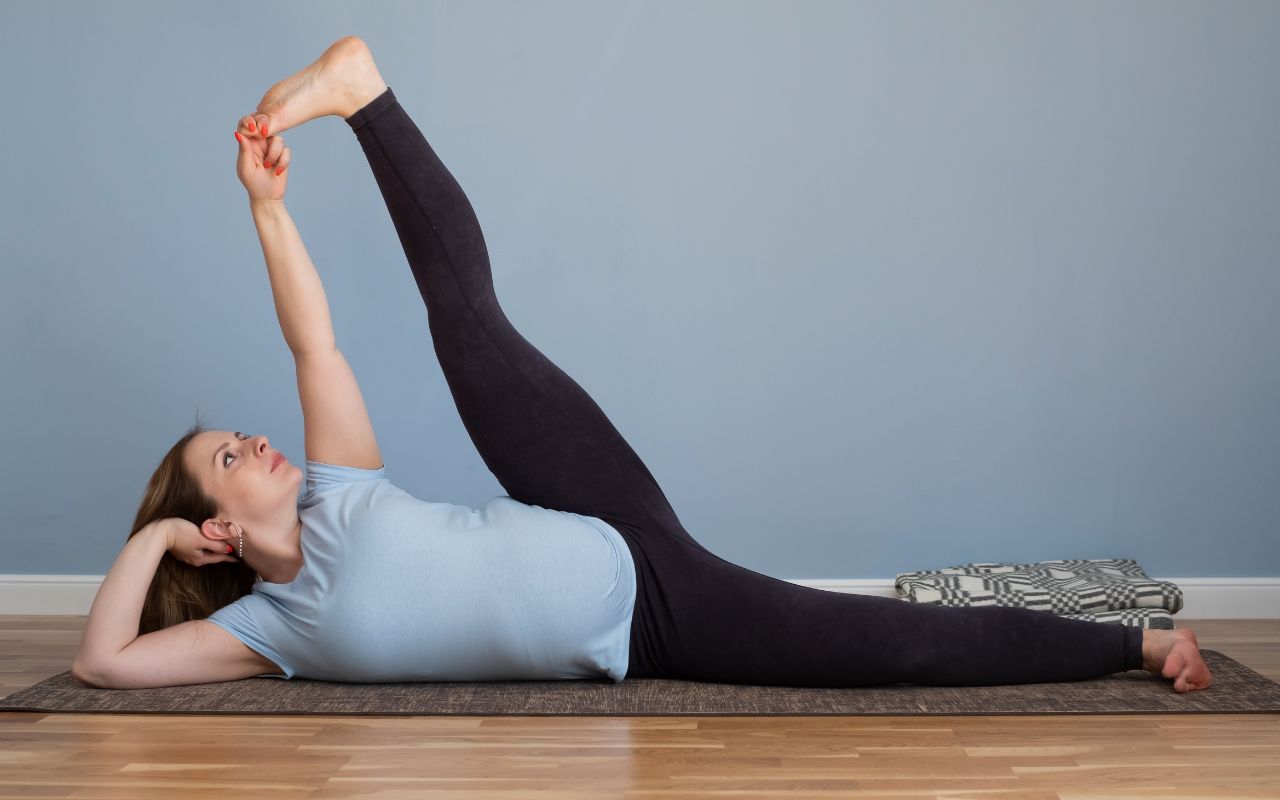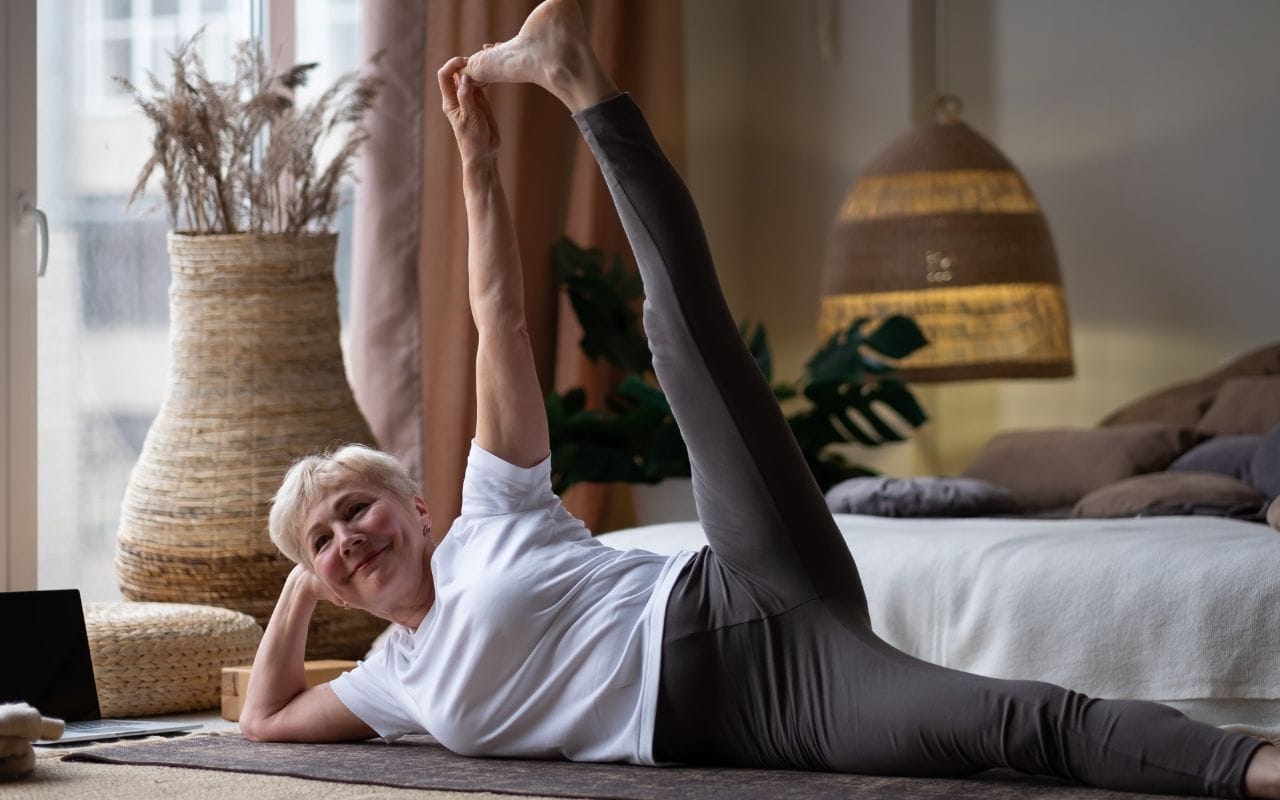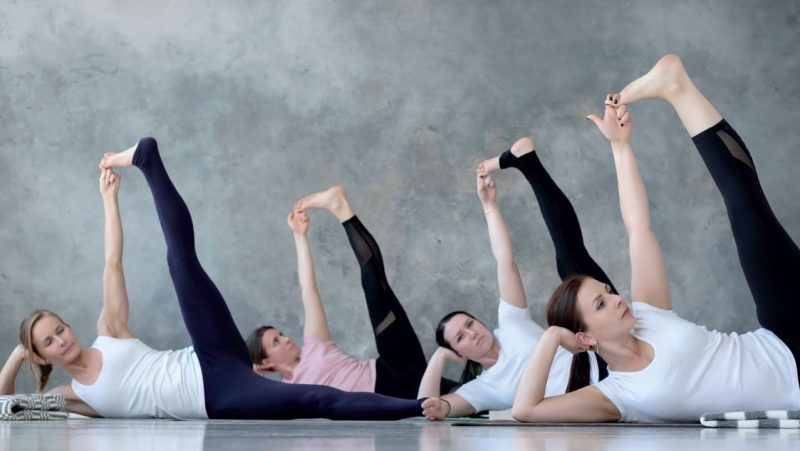If there was ever a laid back yoga pose, it has to be Anantasana, also known as Sleeping Vishnu or Infinity Pose. At first glance, this posture looks like a doddle, but look a little closer and you'll find there is actually quite a lot going on.
The pose itself is said to resemble the blue-skinned Hindu god Lord Vishnu as he slumbers peacefully on Ananta – the giant mythical 1,000 headed serpent. Ananta represents all eternity and infinity, and his timeless coils are said to hold up the universes as he floats at the bottom of the cosmic Ocean of Possibility. Vishnu is the protector of all the universes and should Ananta notice a disturbance in the cosmos, he rattles his coils. These deep vibrations wake Vishnu from his slumber, notifying him that all is not well in his realm of galaxies. Vishnu then takes the form of an avatar to put the world right and restore cosmic order.
Although Anantasana seems an easy pose to perform, balancing on our sides can be quite challenging and requires a certain amount of abdominal strength to hold the position and prevent us from rolling over. Straightening the top leg to catch hold of the toes or the foot can also be a little bit tricky, demanding strong leg muscles – especially the hamstrings and inner thigh muscles – the abductors.
As always, we first warm up and stretch the muscles we will be using to come into Anantasana. We could genty work on our Down Dog to lengthen the hamstrings, practice the wide-legged forward bend Padottanasana to stretch the abductors, and Half Boat or even full Boat Pose - Navasana (if you are feeling strong) to strengthen the abdominals.
When you are ready and your muscles are warm, lie on your right side, bend both knees so that they are stacked on top of each other, bend your right elbow and rest your head on your hand. Draw the left knee towards you, take hold of the toe, the foot or use a belt if that works better for you, then slowly begin to straighten the left leg towards the ceiling whilst externally rotating the hip (fine to keep a slight bend in the knee if the hamstrings feel tight). This is a fabulous place to stay and breathe, but if it feels OK and you want to take it further, then you can slowly work towards straightening and sliding the bottom leg away, maintaining your balance on your side whilst flexing the right foot to keep the leg muscles active. Stay for as long as feels comfortable, then slowly release, shake or stretch anything here to reset your muscles, and repeat on the other side.
It’s a good idea to lie on the long edge of our mat as a guide to help us with our alignment, plus Sleeping Vishnu is also a lovely pose to practice when we have the sofa all to ourselves!
BKS Iyengar mentions Anantasana in “Light on Yoga:” “The pelvic region benefits from this exercise and the hamstring muscles are properly toned. The asana also relieves backaches and prevents the development of hernia.”
We might not have all of infinity, but sometimes these postures can take a little time and patience to practice and perfect, but yoga isn’t all about perfection – if it feels good, stay with it. Sleeping Vishnu is a work in progress and wobbling and rolling over is all part of the fun of this pose, but as always work to your measure, listen to your breath and let your body become the centre of your universe.
Benefits of Anantasana

- Improves balance
- Relieves mild back pain
- Tones the abdominals and strengthens the core
- Increases hip flexibility
- Lengthens and stretches the hamstrings and abductor muscles








